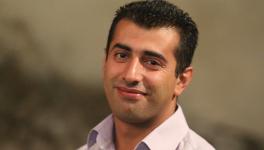Are Mushrooming Private Colleges Creating a Surplus of Dentists?
Image for representational use only.Image Courtesy : Outlook India
Thanks to mushrooming private dental colleges in India, more dental graduates are being created than there is demand for, as the metros, smaller cities and towns are already saturated. As for rural areas, oral healthcare is not an area of great concern yet.
The dental education sector in India provides training at the under-graduate, post-graduate and post-doctoral levels. The first degree, BDS (Bachelor of Dental Surgery), comprises under-graduate training of four years followed by one year of internship. The students rotate through various dental specialities after the completion of the formal coursework and examinations given during the first four years of the programme.
The curriculum prescribed by the Dental Council of India (DCI), a statutory body constituted under the Dentist Act, 1948, guides basic training in most major areas of dental care and is the prerequisite for further training in residency education. Post-graduate training includes residency programmes of three years, culminating in MDS (Master of Dental Surgery).
In 1966, the first private dental institution was established; up to the year 1966 all dental colleges belonged to the government sector. Soon after this period, dental colleges started mushrooming. However, the growth was not uniform in the government and private sectors. Currently, according to the data available through the official website of DCI, there are 318 dental colleges in the country, out of which 263 are privately-owned and 55 are run by the government.
Rise in Enrolment
According to the National Health Profile 2018 and data available through DCI, there has been a massive rise in the number of admissions in the dental colleges for both BDS and MDS courses. In 1994-1995, the number of admissions to the BDS course was 1,987, and number of admissions into the MDS course was 225. In the academic year 2017-2018, the number of admissions to the BDS course had risen to 27,060, and number of admissions to the MDS course had increased to 6,233.
Dental healthcare in India is not integrated with general healthcare and in most of the public healthcare set-ups, it is not provided at the primary level. In very rare cases, it is provided at second level up to some extent, but mostly, dental care is reserved for the tertiary care centres. Most public dental healthcare set-ups are poorly equipped and under-staffed, as dental care is not given a priority in budgetary allocations.
A recent article analysed the growth in the number of dental colleges and its effect on dentists and the dental care system of the country. It mentioned that according to the World Health Organisation(WHO), the ideal dentist-population ratio is 1:7500. In 2004, the dentist-population ratio in India was 1:30,000. According to World Health Statistics – 2014, the ratio is 1:10,000.
“However, the ratio suggests that there are still not enough number of dentists in India, but it is not the sole factor, there is one more factor which cannot be ignored is inequality in the distribution of dentists. In rural areas, the dentist population ratio is very less as compared to urban areas. In year 2004, India had one dentist per 10,000 people in urban areas and one dentist per 2.5 lakh people in the rural areas,” said the analysis.
The article goes on to explain that the number of posts available for dentists in the public sector is very low. According to it, only 5% of graduated dentists were working in the public sector in 2015. It is difficult for newly-graduated dentists to set up clinics in urban areas, as these areas are already saturated with dentists. In rural areas, private clinics are not viable because of lack of awareness about oral health among the rural population.
A recent paper published in the International Dental Journal in 2014, said, “The current number of new dentists graduating per year in India is approximately 24,000. In the absence of any new health strategy or policy, we can assume that the behaviour of patients and dentists within their profession will not change. Assuming a 2% loss of manpower from practice, the total number of dentists available by 2020 will be more than 309,700 for a population of 1,326,093,000 and there will be an overproduction of 100,000 of qualified dentists.”
However, the question remains as to how qualified the dentists graduating from these mushrooming dental colleges are. Talking to NewsClick, Prithivi Prakash, a public health professional who had studied dentistry said, “Most of these private institutes lack the infrastructure to train the students properly. During their final year of BDS, the students are supposed to see a certain number of patients. However, that number is seldom reached by the students studying in private colleges situated in remote areas away from cities and towns.”
He added that even after completing their BDS, dentists are forced to work in private clinics and private hospitals at meagre salaries. He said especially in South India, the number of dentists graduating every year is way more than the demand, and the dentists are wary of taking the financial risk of setting up their own clinics after completing BDS, and rightly so, since there is a surplus in the number of dentists. He said, “This forces the dentists to attempt to study MDS but the government colleges barely have any seats for the course. The private colleges charge around Rs 70 lakh for the course. Most of the dentists are forced to work at meagre salaries, or switch to other fields, like I did.”
Get the latest reports & analysis with people's perspective on Protests, movements & deep analytical videos, discussions of the current affairs in your Telegram app. Subscribe to NewsClick's Telegram channel & get Real-Time updates on stories, as they get published on our website.
























